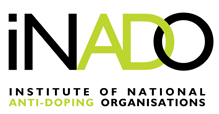Anamorelin (ONO-7643) for the treatment of patients with non-small cell lung cancer and cachexia : Results from a randomized, double-blind, placebo-controlled, multicenter study of Japanese patients (ONO-7643-04) / Nobuyuki Katakami, Junji Uchino, Takuma Yokoyama, Tateaki Naito, Masashi Kondo, Kouzo Yamada, Hiromoto Kitajima, Kozo Yoshimori, Kazuhiro Sato, Hiroshi Saito, Keisuke Aoe, Tetsuya Tsuji, Yuichi Takiguchi, Koichi Takayama, Naoyuki Komura, Toru Takiguchi , Kenji Eguchi. - (Cancer 124 (2018) 3 (1 Feb); 606-616)
- PMID: 29205286
- PMCID: PMC5814824
- DOI: 10.1002/cncr.31128
Abstract
Background: Cachexia, described as weight loss (mainly in lean body mass [LBM]) and anorexia, is common in patients with advanced cancer. This study examined the efficacy and safety of anamorelin (ONO-7643), a novel selective ghrelin receptor agonist, in Japanese cancer patients with cachexia.
Methods: This double-blind clinical trial (ONO-7643-04) enrolled 174 patients with unresectable stage III/IV non-small cell lung cancer (NSCLC) and cachexia in Japan. Patients were randomized to daily oral anamorelin (100 mg) or a placebo for 12 weeks. The primary endpoint was the change from the baseline LBM (measured with dual-energy x-ray absorptiometry) over 12 weeks. The secondary endpoints were changes in appetite, body weight, quality of life, handgrip strength (HGS), and 6-minute walk test (6MWT) results.
Results: The least squares mean change (plus or minus the standard error) in LBM from the baseline over 12 weeks was 1.38 ± 0.18 and -0.17 ± 0.17 kg in the anamorelin and placebo groups, respectively (P < .0001). Changes from the baseline in LBM, body weight, and anorexia symptoms showed significant differences between the 2 treatment groups at all time points. Anamorelin increased prealbumin at weeks 3 and 9. No changes in HGS or 6MWT were detected between the groups. Twelve weeks' treatment with anamorelin was safe and well tolerated in NSCLC patients.
Conclusions: Anamorelin significantly increased LBM and improved anorexia symptoms and the nutritional state, but not motor function, in Japanese patients with advanced NSCLC. Because no effective treatment for cancer cachexia is currently available, anamorelin can be a beneficial treatment option.
